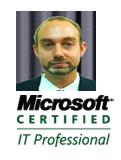Last week, as part of the DFW Unified Communications User Group series on “Lync as a PBX”, I presented an update on where we stand with Microsoft Lync 2010 in the Contact Center. I thought I would summarise that presentation in a post.
Lync has some “hunt group” capability called Response Groups built in that has some similar small scale contact center capability, however, at this point there is no official contact center from Microsoft for Lync. While some see this as a weekness, Microsoft has committed it’s resources to improving the overall platform and left the call / contact certer functionality as a 3rd party partner add on. This isn’t unusual, some legacy TDM PBXs vendors merely OEMed other 3rd party contact centers to provide a “all in one” solution – (this is the case in many segments of the PBX world, including phones and headsets, many vendors don’t supply everything but partner with other vendors to OEM products). For Lync, Microsoft has made it clear believes in the ecosystem model and doesn’t desire to put the Microsoft label on products that are not part of the core offering.
However, this ins’t entirely true – if you have the dedication to make a completly custom solution, or want to jump into the Lync Contact Center segment with a brand new product, Microsoft has provided a functional contact center as example code free with the Lync 2010 SDK. (Unless I’m mistaken, I know of no other vendor that does this).
Broadly, one can break down Lync Contact Centers into 3 catagories –
1. Native Lync based on the UCMA development platform – the advantage here is that the calls never leave Lync, so troubleshooting and architecture is simplified. Examples include Clarity Connect and prairieFyre .
2. SIP trunked with UCMA Integration for Presence integration and Automation – Calls are passed to another SIP based PBX. It’s essentually like being Federated to a 3rd party solution, although some use Lync Voice to present the call to the Agent or for when the Agent makes a call that is not tied to the contact center. The advantage here is that mature products that have been in the Contact Center space for a long time can be leveraged with Lync. Examples include Aspect Unified IP, Altigen, Zeacom, and in a couple of months Genesys .
3. “Work with Anyone” solutions that have no integration with Lync at all that are merely trunked to Lync – It’s own island, only useful if you want to isolate the contact center from Business Users alltogether.
I’ve found a couple of links that have lists of Contact Centers with Lync.
This list is from a blogger on TechNet:
This site has applications in numerious catagories, including Contact Center:
http://www.ucoffice.com/Pages/default.aspx
Each has product has it’s advantages and disadvantages, is targeted to certain size contact center, and has varing capabilities – and cost – per agent. As usual, you need to evaluate your business needs to make a decision.
Thanks,
Tom



Customer Interaction Center by Interaction Intelligence also integrates with Microsoft Lync.
http://www.inin.com/ProductSolutions/Pages/MS-Integrations.aspx
Very Nice summarization. I do believe that Native makes a huge difference in the overall experience more heavily than people may think at first.
Good summary but I wanted to point out that the Zeacom solution integrates to the Native Lync UCMA not SIP.
Hello, Tom
I am Director of Business Development – Lync for Zeacom.
Wanted to let you know that Zeacom belongs in your first bucket of contact center ISVs for Lync. We have never had our own PBX (regardless of platform) and with Lync we leverage UCMA and trusted conference as a trusted application natively. The call comes into Lync directly and stays there throughout. We simply provide intelligent and skills based routing.
It would be great if you could correct this as it is vital messaging to both MSFT and Lync partners.
I would be happy to arrange a briefing to show you what our architecture and integration with Lync looks like if you reach out to me directly.
Thanks